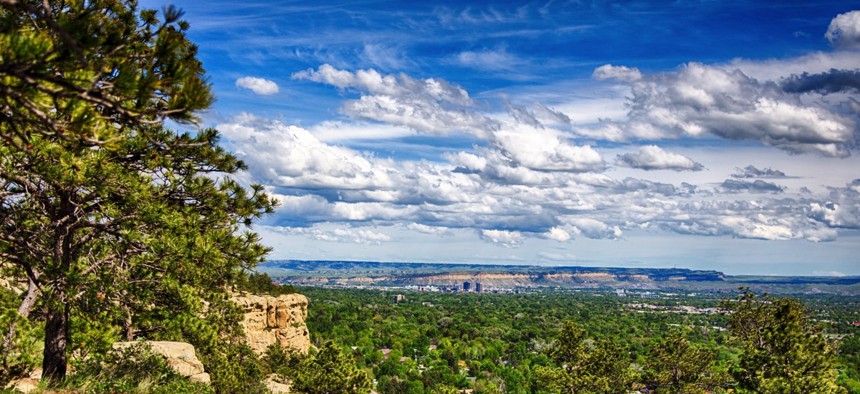FCC Floats Ideas to Fill In Wireless Dead Zones

Billings, Montana

Connecting state and local government leaders
Both Democrats and Republicans at a congressional hearing agreed that gaps in coverage are a problem. “We’ve got to kick somebody’s ass, truthfully,” said Sen. Jon Tester.
WASHINGTON — The Federal Communications Commission chairman on Thursday said governments can close gaps in wireless internet coverage by streamlining regulations on the deployment of small cell equipment that companies are using to improve service.
Ajit Pai, a Republican, told the Senate Commerce Committee that coverage gaps are a concern, noting that urban dead zones are a “public safety issue” with 83 percent of emergency calls coming from mobile devices.
He recommended freeing up more spectrum for internet service providers and refocusing federal subsidy programs on underserved areas, but also pushing local communities or states to more quickly permit fifth-generation wireless, or 5G, infrastructure—small cells in particular.
“They’re guts of these networks that are critical,” Pai said during the hearing. “In a lot of these places there might be federal, state or local restrictions that prevent that.”
On the matter of digital redlining, where wireless carriers avoid extending service to neighborhoods with poor return on investment, Pai voiced support for the Gigabit Opportunity Act.
The bipartisan Senate bill would grant tax incentives to companies that install wireless infrastructure in areas with a median income 75 percent or less than the national median. Employers who create jobs in the areas using the resulting networks would see their payroll taxes cut.
But Commissioner Jessica Rosenworcel, the FCC’s lone Democrat at present, said there were more immediate steps the FCC, itself, could take like identifying redlined areas using fixed broadband deployment data supplied by providers. From there, the FCC could open up a proceeding soliciting stories from underserved urban and rural areas, she said.
“Too often during the last year the agency acted at the behest of the corporate forces that surround it, shortchanging the American people,” Rosenworcel said. “You can see it clearly with our rollback of net neutrality. You see it too with our efforts to foster the deployment of new networks but failure to fully engage those who need a voice in our policies—the cities and towns that should be our partners in the process, the tribal communities that are entitled to government-to-government consultation, and the Department of Commerce, which just last month expressed concern about how our rush to reform could harm national security and public safety services.”
About 24 million citizens lack access to high-speed internet, Rosenworcel said, advocating for raising the broadband speed standard to 100 megabits per second from 25 Mbps.
U.S. Sen. Jon Tester, a Montana Democrat, expressed concern 5G would never come to his state, despite Pai’s assertions the technology could close the digital divide. The senator said he was “happy” 5G is coming to Indianapolis, but his state’s biggest town, Billings, received no response to its push for service.
The FCC is spending more than $300 million annually to “subsidize a fourth, a fifth or even a sixth wireless competitor in a part of the country that already has private investment, and the evidence suggests that states like Montana are getting short-tripped,” Pai said.
Even when what few providers Montana has do receive federal funds, the money might not be spent to expand service, Tester said. “We’ve got to kick somebody’s ass, truthfully,” he added.
“We’ll certainly consider that figuratively, senator,” Pai responded.
Dave Nyczepir is a News Editor at Government Executive’s Route Fifty and is based in Washington, D.C.

NEXT STORY: Why agencies are turning to object storage





